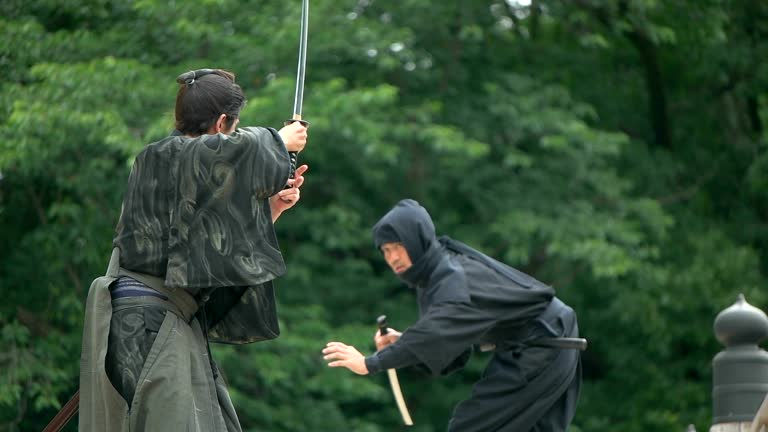Ancient Warriors
- rolla20dd
- Jun 26
- 3 min read

Japan, an old country that is rich with history, has given the world fascinating stories, intertwining historical facts with intricate mythology. Among the most intriguing of stories that captivate the world are the tales passed down of Japan’s ancient warriors. Honor bound and noble of blood, samurai are popular in movies, novels, and comic books throughout the world. Equally as well-known are the ninja, also known as shinobi, who have dedicated their lives to the art of the shadow and deception. Although both warriors come from the same country, the two are as different as night and day when it comes to their morals, armor, and fighting styles.
Samurai live their lives by Bushido, a strict code of honor and morals. If a samurai loses in battle and is denied the right of an honorable death, one of the rules of the Bushido code is that a samurai must commit seppuku voluntarily, so he may die with honor. If a samurai refuses to commit seppuku, he would be forced to leave his title and live in disgrace. Shinobi, on the other hand, do not live by such a code. In fact, ninjas rely heavily on deception, and there is little a ninja would not do to see a mission completed with as few conflicts as possible. For example, it would not be uncommon for a female ninja to seduce an enemy to distract and extract information from. Being experts in the art of poisons, ninjas commonly used poison as a means to quickly put an end to a confrontation.
One of the more apparent differences is class. Samurai are born from noble families and are professionally trained in the art of war. On a samurai’s finely crafted armor, he would often sport bright colors that show what noble family from which he descends. However, ninja were usually of lower class, with the majority being villagers, farmers, and disgraced samurai. Being of lower class, ninja would wear darker attire that ensured his face would be concealed from a potential adversary. Instead of armor, they would usually adorn cloth that enabled more stealthy movement.
Being professionally trained for war, samurai had access to many forms of martial arts, which made it clear as to why the samurai rose to govern Japan between 1185-1186. (The Age of the Samurai, n.d.) Samurai practiced Jujutsu, Kyudo, Iiado, and Kenjutsu with higher ranking samurai having access to Daito-ryu Aiki-Jujutsu, which, invariably, had the best unarmed techniques of all Japanese unarmed martial arts of the day. Without professional training, the ninja relied heavily on strategy, and tactics of conventional warfare, guerilla warfare, and espionage. This was known as Ninjutsu, which rose in prominence during 1467-1573, a time known as the Sengoku period, more well known as the Warring States period. (Ninjutsu
)
Looking at another countries’ ancient warriors truly can give modern man a deep insight to ancient warfare. Although the two warriors are different, they were both skilled in the ways of battle and had different means of accomplishing their goals. As spoken by Japanese historical writer, Eiji Yoshikawa in his book Musashi, “Fighting isn’t all there is to the Art of War. The men who think that way, and are satisfied to have food to eat and a place to sleep, are mere vagabonds. A serious student is much more concerned with training his mind and disciplining his spirit than with developing martial skills.” (Eiji Yoshikawa, n.d.)


コメント